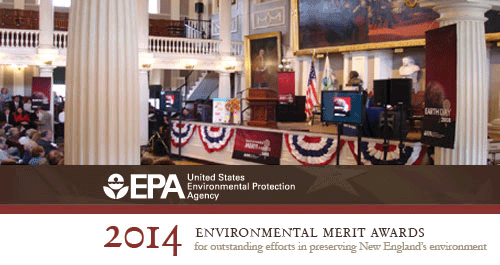Prof. Hellweger wins the 2012 New England EPA Environmental Merit Award

Prof. Ferdi Hellweger won the Environmental Merit Award from the New England Office of the U.S. Environmental Protection Agency (EPA) in recognition of his exceptional work and commitment to the environment. EPA's Environmental Merit Award is an annual award that recognizes outstanding environmental advocates who have made significant contributions toward preserving and protecting our natural resources. Ferdi has been a leading researcher and advocate for water quality in the region as highlighted through his monitoring and modeling of water quality in the Charles River. Congratulations to Ferdi!
Source: News @ Northeastern
The Charles River has a long history of pollution — Boston’s anthem, “Dirty Water,” was first recorded more than forty years ago. But taking a dip was common practice until the 1950s, when people started to realize that industrial waste and sewage runoff were making swimming hazardous.
Since joining the Northeastern faculty in 2004, environmental engineering associate professor Ferdi Hellweger has been working to make the river swimmable again. Earlier this month, the New England Region of the Environmental Protection Agency honored him with an Environmental Merit Award for his effort.
Today, after decades of work by many people to clean up the Charles, the river is swimmable approximately 70 percent of the time. But, Hellweger explained, the problem is pinpointing that time.
“I can go out now and collect a water sample, but I have to filter it, incubate it and wait 24 hours before I know it’s good. If I’m interested in swimming, I want to know if it’s good now,” he said. “We’re trying to find a way to predict where and when it is safe to go swimming.”
Hellweger said two main culprits prevent swimming in the river the remaining 30 percent of the time: fecal bacteria like E. coli and toxic algae.
Fecal bacteria, he said, originate in sewage, which can enter the river because of the way Boston’s sewer system was originally designed. Unlike in modern systems, there is one set of sewer pipes that move both rainwater and sanitary sewage to a treatment facility. On rainy days, those pipes would overflow into the river. Today many pipes have been separated, but some remain combined and many illicit sewage connections endure.
Toxic algae, specifically cyanobacteria, grow in the river and proliferate when the temperature and nutrient conditions are just right. On very hot days, algae take over.
Hellweger is working to model the Charles’ water quality with the eventual goal of developing a computer program or application that can predict how swimmable the river will be from one day to the next.
“The vision is to have a weather forecast for the river,” he explained. “The idea is you go to a website for a weather forecast, and you see not only the temperature for tomorrow but also whether you can swim at the beaches.”
In other cities such as Zurich and Bern, swimming in urban lakes and rivers is part of the culture. Hellweger believes that the Charles River is an underutilized but important resource with great potential, noting, “If we could swim in the river, it would tremendously increase the quality of life in the city.”
Governor Patrick has initiated a commission to study the water quality with the hope of opening the river to swimming within five years. If successful, the Charles would be the first urban river in the country to welcome swimmers within the last several decades.